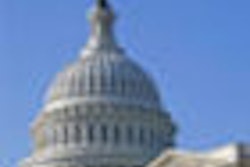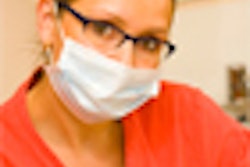
Midlevel dental providers -- aka "superhygienists" -- could soon be performing extractions, restorations, and other dental procedures in Minnesota.
May 2008 legislation mandated the creation of an oral health practitioner (OHP) in Minnesota by January 1, 2011, and called for a work group to be established to develop guidelines for the education and regulation of these practitioners.
“I could be vacationing in the Bahamas while an OHP does an extraction; would the patient be comfortable with that?”
— Mike Flynn, D.D.S., Minnesota Dental
Association
The 13-member work group, comprising both dentists and hygienists, has now completed its proposal and submitted it to the state Legislature. Lawmakers plan to introduce a revised version of the original legislation to reflect the work group recommendations, according to news reports.
The concept of a midlevel dental provider has prompted keen debate in recent months, with the ADA, Academy of General Dentistry, and American Dental Hygienists' Association (ADHA) all taking different sides and proposing different solutions. Eyes are now focused on what happens in Minnesota, which could set the stage for other states to follow suit.
A key issue is how independently the midlevel providers should be allowed to work. The Minnesota work group is proposing that the OHP practice under the supervision of a dentist according to the terms of a written collaborative agreement. Within the parameters of the agreement, the OHP could perform preventive, primary diagnostic, educational, palliative, therapeutic, and restorative oral health services.
Specific procedures include:
- Cavity preparation class I-IV
- Restoration of primary and permanent teeth class I-IV
- Placement of temporary crowns
- Placement of temporary restorations
- Preparation and placement of preformed crowns
- Pulpotomies on primary teeth
- Surgical services
- Extractions of primary and permanent teeth
- Brush biopsies
"If a dentist is not comfortable with the OHP doing certain procedures, they can limit the scale of the OHP's practice," Colleen Brickle, R.D.H., a member of the work group from the Minnesota Dental Hygienists' Association, told DrBicuspid.com. "The ultimate decision is up to the dentist."
Another member of the work group, Mike Flynn, D.D.S., from the Minnesota Dental Association, believes an OHP should only practice with a dentist present onsite -- something the collaborative agreement does not ensure.
"There are about 3,500 dentists out there [in Minnesota], and I am sure you could find quite a few who would enter into a collaborative agreement that will not require them to be onsite," Dr. Flynn said in an interview with DrBicuspid.com. "I could be vacationing in the Bahamas while an OHP does an extraction; would the patient be comfortable with that?"
OHPs should be complementary, not competitive, and should act as part of the dental team, he noted. In addition, only the dentist should be able to diagnose conditions and create a treatment plan.
Others are concerned that the collaborative agreement might already be too restrictive.
"We would hope that the collaborative arrangements are flexible so that the OHP can see more patients," said ADHA President Diann Bomkamp, R.D.H. "If they have to work too closely with the dentist, that can be limiting. We would like them to go out and reach more people."
This is the primary motivation behind creating a midlevel provider: to increase access to care. The proposed legislation therefore requires that an OHP should be limited to practicing in settings that serve low-income, uninsured, and underserved patients, or in areas with a shortage of dental health professionals.
"It’s a huge step forward to address the access to care issue," Brickle said.
The first graduating class of OHPs would comprise about 25 students -- a number Dr. Flynn is not impressed by.
"How much difference can 25 professionals make?" Dr. Flynn said. "Also, you cannot just go and do dentistry anywhere. You can assess patients, but you can't do anything without equipment. How will they do fillings and extractions without proper equipment?"
Educational requirements
Other key issues are education and training. The Minnesota work group requires that the OHP be a graduate of an oral health practitioner education program that has been approved by the state dental board or accredited by the Commission on Dental Accreditation or another board-approved national accreditation organization.
Under these guidelines, OHPs should pass a comprehensive, competency-based clinical examination that is approved by the board and administered independently of an institution providing oral health practitioner education, as well as an examination testing their knowledge of Minnesota laws relating to the practice of dentistry.
Two possible educational programs are now under consideration. One is a Metropolitan State University 26-month Master of Science program that requires a bachelor's degree, an active dental hygiene license, a restorative functions certification, and 2,400 hours of clinical practice.
Experts are divided over how effective this program would be, given its length.
"There are so many procedures they want this practitioner to learn that a two-year degree program is simply not enough to prepare them," Dr. Flynn said. "They want to be able to do full restorative procedures, crowns, extractions, as well as full hygiene, and I am very concerned that that can't be accomplished in two years."
Brickle argues that the two-year program is adequate because it admits hygienists who come into the program with a bachelor's degree and are fully trained, with 2,400 hours of clinical practice.
The other proposed program is a University of Minnesota 40-month Bachelor of Science or 28-month master's program.
The bachelor's program would be available to students with a high school diploma or equivalent, while the master's degree would require a bachelor's degree and a preprofessional core curriculum for acceptance.
Dr. Flynn feels that the University of Minnesota programs are better designed to train and prepare the OHPs.
While the debate rages, representatives from both schools have said that they will be capable of meeting the necessary educational requirements.
In the meantime, the work group hopes to assuage some of the concerns expressed by the Minnesota dental community.
"The Board of Dentistry, in consultation with the Department of Health, shall develop an evaluation process that focuses on assessing the impact of oral health practitioners in terms of patient safety, cost-effectiveness, and access to dental services," the work group concluded in its recommendations.



















